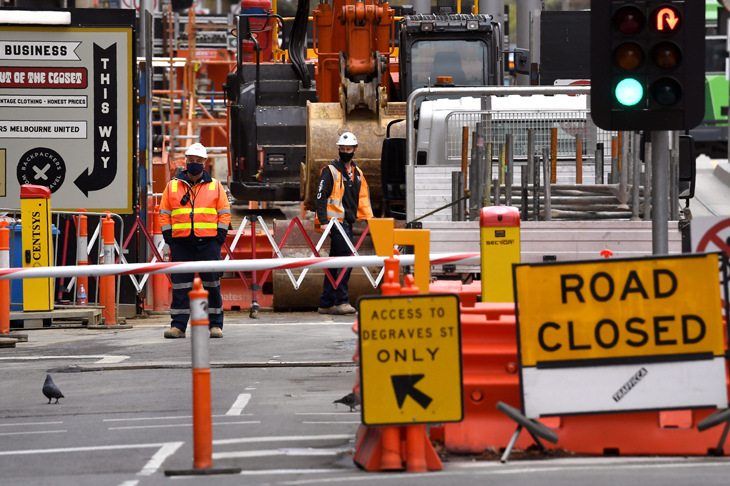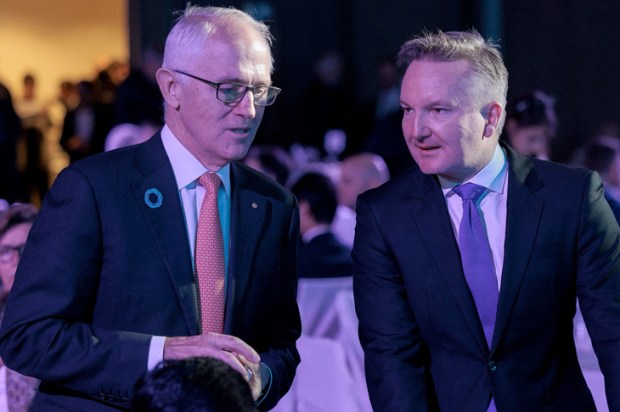There’s a section of the Bruce Highway that we drive along fairly frequently. It’s been a construction site and unmitigated mess for years. Cars, trucks and buses are required to slow to a snail’s pace. The directions for turnoffs are confusing and constantly changing; it’s easy to head off in entirely the wrong direction.
Even though the ostensible objective of the project is to improve traffic flows to accommodate the increasing traffic load, we regularly joke that we will both be dead before it’s finished.
But, hey, it’s infrastructure spending. That must be good. These days, political leaders think they can’t go wrong by announcing more spending on infrastructure. It’s akin to motherhood: good of itself, good for the nation.
All levels of government get in on the act, although the state governments tend to lead the pack when it comes to spending big on infrastructure and overseeing willfully mal-administered projects the costs of which blow out dramatically and which are typically wildly behind schedule.
But we shouldn’t think this is just an Australian phenomenon. Infrastructure spending is more popular as ever all around the world. If it’s not China’s Belt and Road Initiative, it’s President Biden’s proposal to spend $US3 trillion on infrastructure.
And here is his syrupy defence of this massive outlay. ‘Now is the time to build on the foundation that we’ve laid, to make bold investments in our families, in our communities, in our nation. We know from history that these kinds of investments raise both the floor and the ceiling of an economy for everybody.’
Actually, Joe, this is rubbish. If governments spend on infrastructure projects where the costs are greater than the benefits, this lowers both the floor and the ceiling for everybody – we are worse off. And given the political nature of the infrastructure spending decisions, it’s odds-on that plenty of projects won’t meet a cost-benefit test, particularly given the clear tendency for final costs to blow out.
In reality, Biden’s original infrastructure plans extended well beyond what most people would understand by the term infrastructure (road, bridges, water/sewage systems, broadband, airports). It included spending on aged care, paid parental leave, child care and the like. It even has its own name, soft infrastructure, thereby leveraging off the unchallenged infrastructure brand.
While Biden has struggled to secure the support of Congress to fulfil his full ‘infrastructure’ spending plans, it looks as though at least $US700 billion will be approved with possible additional funding for the soft stuff in due course.
But here’s the thing – and this logic applies no less to Australia as it does the US – the rationale for pressing the pedal to the metal on infrastructure at this point of time is very weak indeed. The temporary downturn in the economy was the result of a supply shock associated with the Covid-related restrictive measures implemented by various levels of government as well as some private reactions by individuals and businesses. It wasn’t caused by a deficiency in demand like the Global Financial Crisis.
With many of these restrictions gone and consumer and business confidence bouncing back, it doesn’t make any sense to massively ramp up government spending, including on infrastructure, right now. After all, the rate of unemployment in the US is 5.5 per cent and falling, and, in Australia, it’s 5.1 per cent, with May recording one of the largest jumps in employment ever.
But with governments now operating as if there are no budget constraints, there has been a veritable deluge of new infrastructure spending plans announced. The Australian government, for instance, brags about its $110 billion, 10-year plan commencing this year.
The NSW government has also ramped up its infrastructure spending, with over $107 billion committed for the four years ending in 2024-25. Projects include the new Royal Prince Alfred Hospital and Sydney Metro West.
Even little ol’ South Australia is in on the infrastructure spending binge, with $3 billion announced for a Jobs and Infrastructure Acceleration Fund, ‘which will support 20,000 jobs and deliver new and fast-tracked projects’. These include (yet another expensive) hospital (the Women’s and Children’s), yet another stadium and the completion of the upgrade of South Road in Adelaide, a project that has gone massively overbudget.
So what could go wrong? Actually, an awful lot could go wrong and has gone wrong. Take the West Connex project in Sydney the costs of which, it now turns out, were massively underestimated by the bureaucrats. (The lack of contracting skills and attention to detail by the responsible bureaucrats is a perennial issue with these projects.)
Four billion dollars of construction costs were excluded from the original estimate; so rather than cost just under $17 billion, the true cost of the project is now closer to $21 billion.
And should I mention here the near-empty little tram that runs between Circular Quay and Randwick?
Mind you, Victoria probably wins the gold medal in mismanaging projects. The original cost of the West Gate Tunnel of $5.5 billion has now blown out to at least $10 billion, with part of the tab for the project being picked up by the government granting a lengthy toll extension to the private operator in an unrelated part of the road network.
The new underground project, the Metro Tunnel, is a complete train wreck (gettit?) in every sense, with a recent pay deal for some of those working on the project of $300,000 per year per worker.
One of the fundamental problems with infrastructure projects in Australia is the lack of competition among the head contractors, which are mainly overseas-owned. Essentially, these oligopolists raffle the projects, quote on a cost-plus basis (to be negotiated after the event) and share the gains with the select workers (overwhelmingly men) who are employed on these projects.
The end result is that taxpayers are fleeced for at least 50 per cent more than the efficient price of building these projects and the accumulated debt will have to be paid down by future taxpayers. And with every government getting in on the act, the costs of these projects is being inflated even further, with shortages of workers, engineers and materials widespread.
With infrastructure, unlike motherhood, it’s a case of wrong timing, wrong projects, massively expensive projects and badly executed projects. Good of itself and good for the nation? Hardly.
Got something to add? Join the discussion and comment below.
Get 10 issues for just $10
Subscribe to The Spectator Australia today for the next 10 magazine issues, plus full online access, for just $10.
You might disagree with half of it, but you’ll enjoy reading all of it. Try your first month for free, then just $2 a week for the remainder of your first year.














Comments
Don't miss out
Join the conversation with other Spectator Australia readers. Subscribe to leave a comment.
SUBSCRIBEAlready a subscriber? Log in